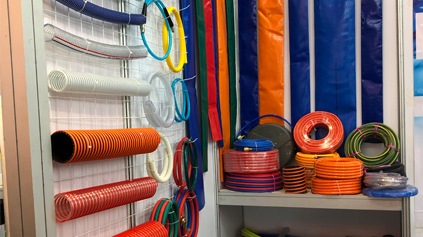polyurethane duct
Understanding Polyurethane Ducts A Comprehensive Overview
Polyurethane ducts have gained significant attention in various industries due to their unique properties and advantages. As a versatile and flexible material, polyurethane (PU) offers excellent thermal insulation, durability, and resistance to chemicals, making it an ideal choice for ducting applications. This article explores the benefits, applications, and considerations associated with polyurethane ducts.
Advantages of Polyurethane Ducts
One of the primary advantages of polyurethane ducts is their exceptional thermal insulation properties. PU has a low thermal conductivity, enabling it to maintain the desired temperature within HVAC systems while reducing energy loss. This characteristic is particularly beneficial in both residential and commercial settings, where temperature control is paramount for occupant comfort and energy efficiency.
In addition to thermal insulation, polyurethane ducts are also lightweight and flexible. This flexibility facilitates easier installation and manipulation in confined spaces, reducing the labor time and associated costs. Unlike traditional metal ducts, PU ducts can be easily cut and shaped on-site, making them a practical solution for custom ductwork.
Moreover, polyurethane is resistant to moisture, mold, and mildew, which are critical factors in maintaining indoor air quality. This resistance helps to prevent the growth of harmful microorganisms, contributing to a healthier environment, particularly in high-humidity areas. Furthermore, polyurethane’s durability ensures a longer lifespan for the ducts, minimizing the need for frequent replacements and repairs.
Applications of Polyurethane Ducts
polyurethane duct

Polyurethane ducts are used across diverse sectors, including commercial, industrial, and residential applications. In commercial settings, they are often utilized in HVAC systems for efficient air distribution while minimizing energy consumption. Industrial environments, such as manufacturing facilities, leverage PU ducts for handling various chemicals and transporting materials due to their chemical resistance.
In residential construction, polyurethane ducting is an excellent choice for central heating and cooling systems. Its lightweight and flexible nature allows for streamlined installations that can significantly enhance home comfort. Additionally, PU ducts are often employed in systems designed for building ventilation, ensuring efficient airflow throughout the space.
Considerations
Despite their advantages, several considerations should be taken into account when choosing polyurethane ducts. While they provide excellent insulation and flexibility, it is crucial to ensure compatibility with existing systems and materials. Proper installation practices are also vital to maximize performance and longevity. Furthermore, while polyurethane is durable, it is important to assess the specific environmental factors, such as exposure to extreme temperatures, which may affect the material's integrity over time.
Conclusion
In summary, polyurethane ducts present a modern and efficient solution for air distribution in various applications. With their superior thermal insulation, lightweight, and resistance to moisture and chemicals, they stand out as an excellent choice for both commercial and residential use. As industries continue to prioritize energy efficiency and sustainability, the demand for polyurethane ducts is likely to grow, affirming their place in the future of ducting solutions.
-
Upgrade Your Water Management with Premium PVC Water Hoses by Leading ManufacturersNewsMar.12,2025
-
Understanding PU Pneumatic Hose: A Comprehensive GuideNewsMar.12,2025
-
Transform Your Gardening Experience with Premium PVC Garden HosesNewsMar.12,2025
-
The Ultimate Guide to Polyurethane TubingNewsMar.12,2025
-
The Essential Guide to Lpg Hose: Safety, Quality, And ValueNewsMar.12,2025
-
Discover the Benefits of PVC Air HosesNewsMar.12,2025














